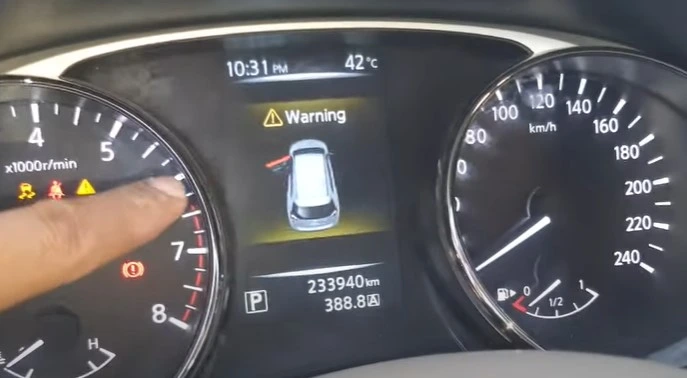ESP Fault on Audi A3 (Causes, Symptoms, and Solutions)
When the ESP (Electronic Stability Program) light comes on in your Audi A3, it can be an alarming experience for many drivers.
This warning indicates a potential issue with the vehicle’s stability control system, which plays a vital role in keeping you safe on the road.
In this article, we’ll dive into what an ESP fault on Audi A3 means, the common causes, symptoms to look out for, and how you can resolve the issue effectively.

What is ESP and Why is it Important in Your Audi A3?
The Electronic Stability Program (ESP) is a safety feature designed to help prevent skidding and loss of control by automatically applying brakes to individual wheels when it detects a loss of traction.
It works with the ABS (Anti-lock Braking System) and traction control systems to keep the vehicle stable during difficult driving conditions, such as wet roads or sharp turns.
When the ESP light comes on, it could signal a malfunction in one of the components, which might compromise the system’s effectiveness.
Common Causes of ESP Fault on Audi A3
When the ESP (Electronic Stability Program) light comes on in your Audi A3, it typically points to an issue within the system that can affect your vehicle’s stability control.
Several factors can cause an ESP fault, ranging from simple issues to more complex system malfunctions. Below are some of the most common causes:
1. Faulty Wheel Speed Sensors
The wheel speed sensors play a crucial role in the ESP system by monitoring the rotational speed of each wheel. If one of these sensors fails or malfunctions, the ESP system may not receive accurate data, triggering the fault light.
2. Defective Steering Angle Sensor
The steering angle sensor monitors the steering wheel’s position and helps determine the vehicle’s direction. If it becomes faulty, the ESP system may not respond correctly, leading to an error.
3. Faulty ABS System
Since the ESP system relies on the ABS to prevent wheel lockup, any problem with the ABS system can cause the ESP fault light to illuminate.
4. Low Brake Fluid Levels
Low brake fluid can also affect the ESP system’s performance. Since the system uses the brakes to stabilize the vehicle, insufficient fluid could lead to issues.
5. Malfunctioning ESP Control Module
The heart of the ESP system is the control module, which processes all data and commands. A failure in the control module will likely cause the system to malfunction and trigger the ESP fault warning.
Symptoms of ESP Fault on Audi A3
When there’s an ESP fault in your Audi A3, several symptoms can indicate that something is wrong with the system.
Recognizing these signs early on can help you avoid further issues and ensure the safety of your vehicle. Here are the most common symptoms to look out for:
1. ESP Warning Light on Dashboard
The most noticeable symptom of an ESP fault is the warning light on the dashboard. If the light comes on and stays illuminated, it’s a clear indication that something is wrong with the system.
2. Reduced Traction Control
When the ESP system malfunctions, you might notice a decrease in traction control. This means the vehicle may feel unstable in slippery conditions, making it more difficult to drive safely.
3. Loss of ABS Functionality
In some cases, an ESP fault may also affect the ABS, leading to reduced braking performance. If you experience issues with braking or the ABS light comes on, it’s important to check the ESP system.
4. Unusual Noises During Driving
Faults in the ESP system can cause unusual noises, such as clicking or grinding sounds, particularly when driving on uneven or wet surfaces.
How to Fix ESP Fault on Audi A3?
An ESP fault on your Audi A3 can be a frustrating experience, but the good news is that many issues can be diagnosed and fixed with the right approach. Below are the steps you can take to address the fault and restore the stability control system.

1. Diagnose the Issue with an OBD-II Scanner
The first step in resolving the ESP fault is to diagnose the problem using an OBD-II scanner. This device connects to your Audi A3’s onboard diagnostic port and retrieves any error codes stored in the system.
These codes can point to the exact cause of the fault, whether it’s a faulty sensor, low fluid levels, or something more serious.
2. Replace Faulty Sensors
If the issue is with one of the wheel speed sensors, steering angle sensor, or ABS components, they will need to be replaced. Depending on the severity of the fault, this may require professional assistance.
3. Check and Top-up Brake Fluid
Low brake fluid can be an easy fix. Check the brake fluid levels and top them up if necessary. However, if the fluid is consistently low, you might have a leak in the system that requires immediate attention.
4. Inspect the ESP Control Module
If the control module is found to be faulty, it may need to be repaired or replaced. This is a complex procedure, so it’s advisable to have a professional mechanic handle it.
5. Reset the ESP System
After repairing or replacing the faulty components, the ESP system may need to be reset. This can be done with a diagnostic tool to ensure that the system is functioning correctly.
Preventive Measures to Avoid ESP Fault on Audi A3
To reduce the risk of an ESP fault, regular maintenance of your Audi A3 is essential. This includes:
- Regularly checking brake fluid levels and replacing old fluid as needed.
- Inspecting the wheel speed sensors and steering angle sensor periodically.
- Maintaining tire pressure to ensure that the sensors are providing accurate data to the system.
Additionally, it’s important to drive cautiously in extreme weather conditions, as this can reduce strain on the ESP system.
People also ask
What does ESP fault mean on Audi?
An ESP fault on an Audi means there’s a problem with the Electronic Stability Program, a system designed to improve vehicle stability and traction.
It could indicate issues with sensors, the ABS, or the control module, affecting the car’s ability to prevent skidding or loss of control.
The warning light on the dashboard signals this fault and requires diagnosis to identify and fix the issue.
Is a ESP fault serious?
Yes, an ESP fault is serious because it affects your Audi’s stability and traction control systems, increasing the risk of losing control in slippery or sharp-turn conditions.
While the car remains drivable, it’s crucial to diagnose and fix the issue promptly for safe driving.
What causes EPC light on Audi A3?
The EPC light on an Audi A3 indicates a fault in the Electronic Power Control system, which manages engine functions like throttle, ignition, and emissions.
Common causes include a faulty throttle body, bad sensors (e.g., mass airflow or brake light sensor),
wiring issues, or problems with the engine control unit (ECU). Prompt diagnosis is recommended to prevent further damage.
How do you clear the ESP fault on an Audi?
To clear an ESP fault on an Audi, use an OBD-II scanner to read and clear the fault codes.
First, fix the underlying issue, such as replacing faulty sensors, topping up brake fluid, or repairing the ABS module.
Once resolved, reset the system with the scanner. If the fault persists, seek professional assistance.
Conclusion
An ESP fault on Audi A3 can be concerning, but with the right diagnosis and repairs, the issue can be resolved.
If you notice the ESP light or experience any of the symptoms mentioned, it’s crucial to address the problem promptly to ensure the safety and stability of your vehicle.
Regular maintenance and timely repairs can go a long way in keeping your Audi A3’s ESP system functioning smoothly and efficiently.






